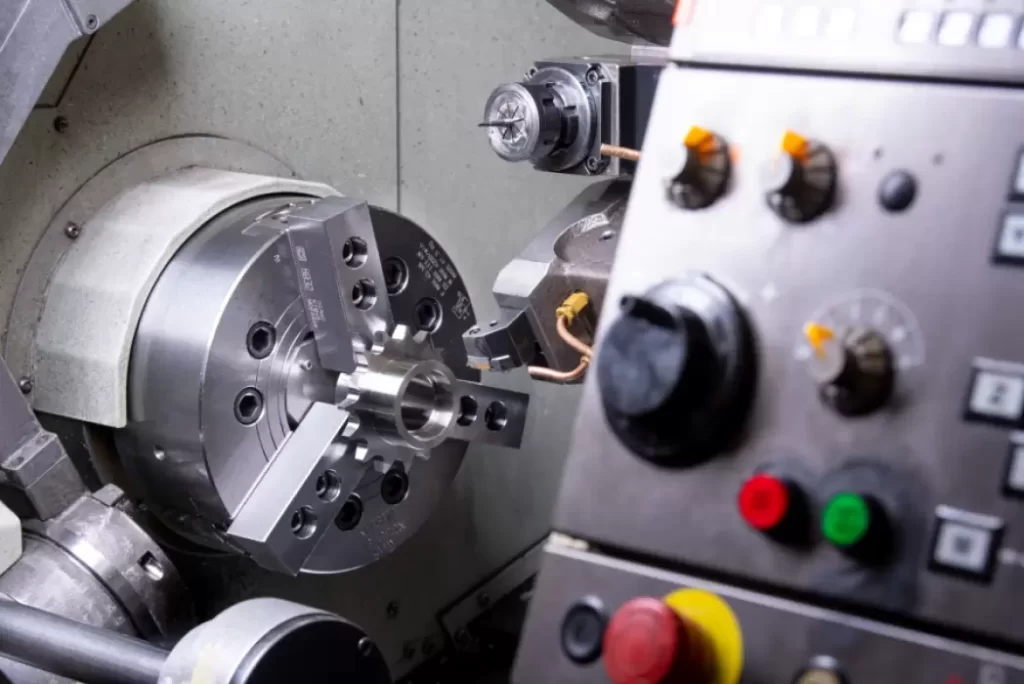Table of Contents:
- Introduction to CNC Engineering
- CNC Machines and Their Components
- Programming Languages for CNC Machining
- CNC Machining Tools and Tool Holders
- Understanding Material Properties for CNC Machining
- Quality Control in CNC Manufacturing
- Automation and Robotics in CNC Engineering
- Future Trends and Challenges in CNC Engineering
- Conclusion: The Importance of CNC Engineering in Modern Manufacturing
-
1.Introduction to CNC Engineering
CNC (Computer Numerical Control) engineering is an advanced technology used in the manufacturing industry for the accurate production of complex parts. The technology has revolutionized the way in which parts are made, allowing for greater precision and repeatability than traditional manual machining methods. The benefits of CNC machining have led to its widespread use in many industries, including aerospace, automotive, medical, and electronics.
-
2.CNC Machines and Their Components
CNC machines are complex systems that require precision-machined components to operate accurately. The core components of a CNC machine include the cutting tool, workpiece, spindle, and control system. Modern CNC machines may also have additional components, such as tool changers, probes, and coolant systems, to improve efficiency and accuracy.
-
3.Programming Languages for CNC Machining
Programming is a critical component of CNC machining. The language used to program a CNC machine depends on the software and hardware used, and the desired output. G-code is the most common programming language for CNC machining, but other languages, such as M-code and APT, are also used.
-
4.CNC Machining Tools and Tool Holders
The selection of the proper cutting tool is essential for CNC machining. The type of cutting tool used depends on the material being machined, the desired surface finish, and the cutting parameters. Tool holders are used to secure the cutting tool in the spindle, allowing for precise cutting. Modern tool holders have advanced features to improve accuracy and reduce setup time.
-
5.Understanding Material Properties for CNC Machining
The properties of the material being machined are critical to the success of CNC machining. The material’s hardness, toughness, and other properties must be taken into account when calculating the cutting parameters to avoid excessive tool wear or part damage. Material selection also plays a significant role in determining the overall quality of the finished part.
-
6.Quality Control in CNC Manufacturing
Quality control is essential in CNC manufacturing to ensure that the parts produced meet the required specifications. Inspection methods may include manual measurements, coordinate measuring machines (CMMs), or non-contact scanning systems. Quality control also includes monitoring the CNC machine’s performance and making adjustments to maintain accuracy over time.
-
7.Automation and Robotics in CNC Engineering
Automation and robotics are increasingly being used in CNC engineering to improve efficiency and reduce costs. Automation can include the use of robots for loading and unloading parts, or the integration of multiple machines into a single automated cell. Robotics can also be used for inspection and testing, improving quality control.
-
8.Future Trends and Challenges in CNC Engineering
The future of CNC engineering looks bright, with advances in software and hardware continuing to increase the capabilities of CNC machines. However, the industry also faces challenges, such as the shortage of skilled machinists and the need to adapt to new materials and technologies.
-
9.Conclusion: The Importance of CNC Engineering in Modern Manufacturing
CNC engineering has changed the way in which parts are made, allowing for greater precision and repeatability than traditional manual machining methods. The technology has led to advances in many industries, including aerospace, automotive, medical, and electronics. As the industry continues to evolve, CNC engineering will remain a critical component of modern manufacturing.
CNC engineering is the process of using computer-controlled machines to create precise and complex parts and products. CNC stands for computer numerical control, which means that the machine follows a set of instructions encoded in a numerical code. CNC machines can perform various operations such as drilling, milling, turning, cutting, and engraving, with high accuracy and efficiency.
CNC engineering has many advantages over traditional manufacturing methods. Some of them are:
- CNC machines can produce parts with complex shapes and geometries that would be difficult or impossible to make by hand or with manual tools.
- CNC machines can produce parts with consistent quality and precision, reducing errors and waste.
- CNC machines can operate 24/7, increasing productivity and reducing labor costs.
- CNC machines can be easily programmed and reprogrammed to make different parts or products, allowing for flexibility and customization.
CNC engineering is widely used in various industries such as aerospace, automotive, medical, military, and construction. CNC engineering is also an art form, as it requires creativity, skill, and knowledge to design and produce parts that meet the specifications and expectations of the customers. CNC engineers use software tools such as CAD (computer-aided design) and CAM (computer-aided manufacturing) to create and simulate the designs before sending them to the CNC machines.




